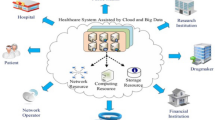Abstract
Objective: With the increasing availability of automated health-care data, new methods are available to screen large populations for the presence of cancer diagnoses. However, it is crucial to evaluate how completely incident cancer cases can be ascertained using these data sources. Methods: We used capture–recapture techniques to estimate the total number of incident breast cancer cases occurring within one state during a 3-year period. We then compared the ascertainment of these cases by the following two data sources: claims for breast cancer surgery recorded in Medicaid and Medicare data vs a cancer registry in the same state. Results: Medicaid–Medicare breast cancer surgery claims identified 68% of the total estimated number of incident breast cancer cases while cancer registry data identified 78%. Case ascertainment improved markedly to 91% when both registry and Medicare–Medicaid data sources were used together. The sensitivity of ascertainment was lower for Medicaid–Medicare data among those aged under 65 and non-white; ascertainment was lower for the registry among women who were aged under 65, poor, and non-white. Conclusions: Combining health insurance claims data with a population-based cancer registry improved the identification of incident cases of breast cancer, and may be particularly useful among demographic groups found to be at highest risk of under-ascertainment such as younger women, the poor, and racial minorities.
Similar content being viewed by others
References
National Cancer Institute (1999) Results of the 1997 SEER Completeness and Data Validity Audit of Cancers of the Breast/ Colon, Lung, and Prostate Diagnosed in 1995: all SEER Registries Combined. Washington, DC: National Cancer Institute.
Demers PA, Vaughan TL, Checkoway H, Weiss NS, Heyer NJ, Rosenstock L (1992) Cancer identifcation using a tumor registry versus death certi®cates in occupational cohort studies in the United States. Am J Epidemiol 136: 1323-1340.
Koh HK, Clapp RW, Barnett JM, et al. (1991) Systematic underreporting of cutaneous malignant melanoma in Massachu-setts. J Am Acad Dermatol 24: 545-550.
Whittle J, Steinberg EP, Anderson GF, Herbert R (1991) Accuracy of Medicare claims data for estimation of cancer incidence and resection rates among elderly Americans. Med Care 29: 1226-1236.
Lohr KN (1990) Use of insurance claims data in measuring quality of care. Int J Technol Assess Health Care 6: 263-271.
Ray WA, Griffin MR (1989) Use of Medicaid data for pharma-coepidemiology. Am J Epidemiol 129: 837-849.
Bright RA, Avorn J, Everitt D (1989) Medicaid data as a resource for epidemiologic studies: strengths and limitations. J Clin Epidemiol 42: 937-945.
Riley GF, Lubitz J (1989) Longitudinal patterns in Medicare costs for cancer decedents. In: Schefler RM and Andrews NC, eds. Cancer Care and Costs: DRGs and Beyond. Ann Arbor, MI: Health Administration Press, pp. 89-98.
Wennberg JE, Roos N, Sola L, Schori A, Jaffe R (1987) Use of claims data systems to evaluate health care outcomes: mortality and reoperation following prostatectomy. JAMA 257: 933-936.
Institute of Medicine (1977) Reliability of Medicare Hospital Discharge Survey Data. Washington, DC: National Academy of Sciences.
Lessler JT, Harris BSH (1984) Medicaid Data as a Source for Postmarketing Surveillance Information. Final report. Research Triangle Park, NC: Research Triangle Institute.
Doyle DN (1966) Accuracy of selected items of Blue Cross claims information. Inquiry 3: 16-27.
Fisher ES, Whaley FS, Krushat M, et al. (1992) The accuracy of Medicare's hospital claims data: progress has been made, but problems remain. Am J Public Health 82: 243-248.
Studney DR, Hakstian R (1981) A comparison of medical record with billing diagnostic information associated with ambulatory medical care. Am J Public Health 71: 145-149.
Roos LL, Sharp SM, Cohen MM (1991) Comparing clinical information with claims data: some similarities and differences. J Clin Epidemiol 44: 881-888.
Schwartz AH, Perlman FF, Paris M, Schmidt K, Thornton JC (1980) Psychiatric diagnoses as reported to Medicaid as recorded in patients' charts. Am J Public Health 70: 406-408.
Berkanovic E (1974) An appraisal of Medicaid records as a data source. Med Care 12: 590-595.
McBean AM, Babish JD, Warren JL (1993) Determination of lung cancer incidence in the elderly using Medicare claims data. Am J Epidemiol 137: 226-234.
Cooper GS, Yuan Z, Stange KC, Dennis LK, Amini SB, Rimm AA (1999) The sensitivity of Medicare claims data for ascertain-ment of six common cancers. Med Care 37: 436-444.
Warren JL, Riley GF, McBean AM, Hakim R (1996) Use of Medicare data to identify incident breast cancer cases. Health Care Financing Rev 18: 237-246.
McClish DK, Penberthy L, Whittemore M, et al. (1997) Ability of Medicare claims data and cancer registries to identify cancer cases and treatment. Am J Epidemiol 145: 227-233.
Ayanian JZ, Kohler BA, Abe T, Epstein AM (1993) The relation between health insurance coverage and clinical outcomes among women with breast cancer. N Engl J Med 329: 326-331.
World Health Organization (1986) International Classifcation of Diseases, 9th revision, Clinical Modifications, vol. 1: Diseases: Tabular List. Commission on Professional and Hospital Activities. Ann Arbor, MI: Edwards Brothers.
American Medical Association (1989) Physicians' Current Proce-dural Terminology, 4th edn. Chicago, IL: American Medical Association.
Physician's DRG Working Guidebook. Louisville, KT: St Anthony Hospital, 1986.
Drug Topics Red Book. Montvale, NJ, Medical Economics Co., 1995.
Fleiss JL (1981) Statistical Methods for Rates and Proportions. New York: John Wiley.
McCarty DJ, Tull ES, Moy CS, Kwoh CK, LaPorte RE (1993) Ascertainment corrected rates: applications of capture-recapture methods. Int J Epidemiol 22: 559-565.
Author information
Authors and Affiliations
Corresponding author
Rights and permissions
About this article
Cite this article
Wang, P.S., Walker, A.M., Tsuang, M.T. et al. Finding Incident Breast Cancer Cases through US Claims Data and a State Cancer Registry. Cancer Causes Control 12, 257–265 (2001). https://doi.org/10.1023/A:1011204704153
Issue Date:
DOI: https://doi.org/10.1023/A:1011204704153




